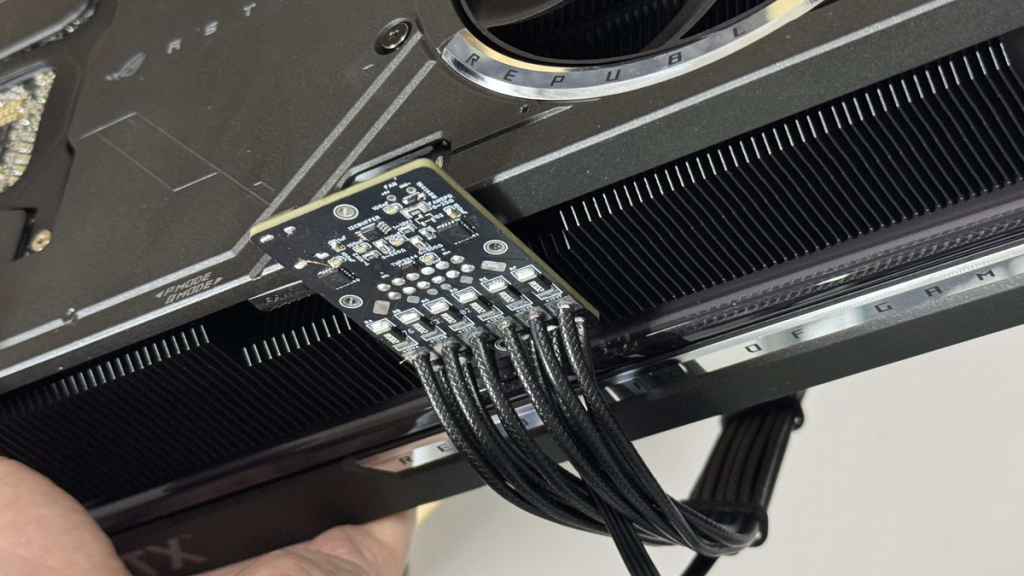The recent concerns surrounding connector overheating have reignited worries among users who successfully acquired an RTX 50 GPU during its launch. A comprehensive examination of Nvidia’s connector design for this generation reveals notable vulnerabilities and shortcomings compared to earlier models. UNIKO’s Hardware reported the innovation of a user on Bilibili who has created a PCB attached to a 16-pin connector. This development allows for individual per-pin current readings and includes a built-in alarm for safety measures.
16-Pin Connector Design and Functionality
The 16-pin connector, referred to as 12VHPWR or 12V-2×6, integrates four sense pins, six current pins for +12V, and six ground pins. The design is theoretically capable of delivering 575W of power, which is the total graphics power (TGP) for the RTX 5090. However, issues such as internal cable cuts or improper connections can result in uneven current distribution, causing connectors to melt.
User Innovations and Safety Enhancements
Data Accessibility and Future Prospects
The addition of a USB port on the PCB allows users to access current readings via software. This feature could potentially be connected directly to a PC, or integrated into a small Arduino or Raspberry Pi project for those interested in DIY electronics.
Shunt resistors are essential components in electronics for measuring current flow. Ideally, each of the six 12V pins would be accompanied by its own shunt resistor. Previous designs from Nvidia included three shunt resistors for the RTX 30 series, although that was still not optimal. The latest design, unfortunately, consolidates all pins to a single shunt resistor, hindering the GPU’s ability to identify which pin may be overloaded. This could result in one pin carrying the entire 575W load, surpassing the rated limit of 9.5A by more than four times.
The ongoing development of this project and its software is anticipated to lead to an eventual open-source release. While constructing such a device might challenge average users, it is feasible for enthusiasts. Consequently, we may witness the emergence of third-party cables adopting similar safety features in the near future.

